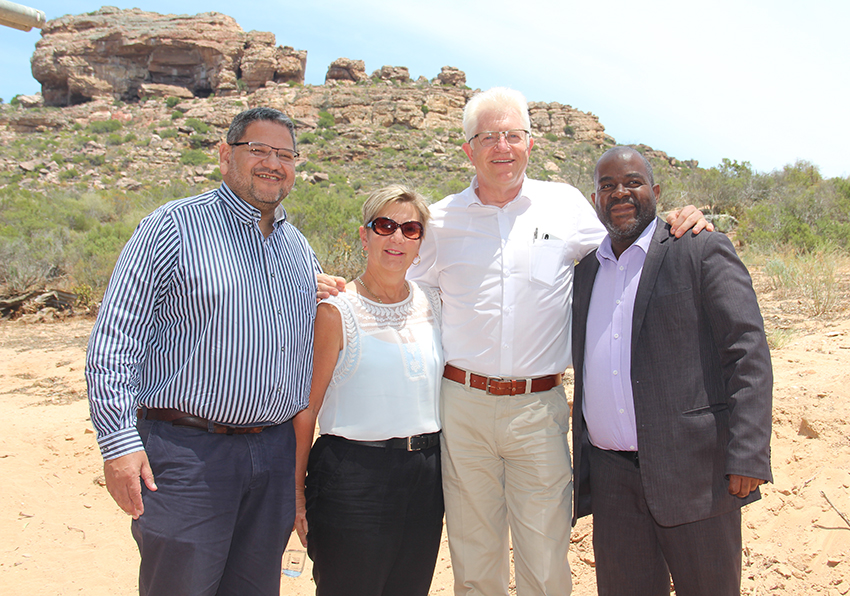
News
Diepkloof Rock Shelter’s World Heritage claim boosted by US fund donation
The scientific and cultural value of the Diepkloof Rock Shelter is set to be preserved for future generations after Heritage Western Cape (an entity of the Western Cape Department of Cultural Affairs and Sport) was granted funding by the US Consulate General.
Following the signing of an agreement at a press conference in Eland’s Bay on Monday, 19 November 2019, R415 000 will be donated to Heritage Western Cape (HWC) by the US Ambassadors Fund for Cultural Preservation. The funding comes as a result of work done by Dr Mxolisi Dlamuka and Dr Mariagrazia Galimberti and their colleagues at HWC.
Diepkloof Rock Shelter is an important archaeological site where a range of artefacts, many dated more than 100 000 years old, has been discovered. These artefacts include stone tools and intentionally carved ostrich eggs and the site is also home to rock art believed to have been painted by Khoe or San people.
The significance of the artefacts was explained by Brent Walters, Head of Department of the Department Cultural Affairs and Sport (DCAS).
“At Diepkloof Rock Shelter archaeologists have discovered an exceptional collection of over 40 intentionally engraved ostrich egg shells dated between 65 000 and 55 000 years ago. These engraved egg shells are amongst the earliest known examples of storage and transport vessels and showcase a graphic tradition, and also the first development of a foray into culture and cognitive thought,” Mr Walters said.
“These engraved fragments are evidence of how our ancestors developed to conceptualise patterns and forms that do not exist in nature and how they used symbols to mediate social interactions. Diepkloof Rock Shelter is also extraordinary for the early appearance of a more refined stone tool between 100 000 and 74 000 years ago. This also provides some of the earliest evidence recorded to date of our ancestor’s ability for abstract thinking, technological innovation, planning and strategising.”
Diepkloof was first discovered in the early 1970s by archaeologists Professor Emeritus John Parkington and Cedric Poggenpoel. Since then a range of archaeologists from different countries have worked on the site. It was named as a provincial heritage site in 2012 and is also currently on the tentative list of United Nations Educational, Scientific and Cultural Organisation (UNESCO) World Heritage sites, along with Blombos Cave and Pinnacle Point Site. Together, these three sites form part of the Western Cape’s Cradle of Human Culture, a heritage and tourism route that includes archaeological and paleontological sites.
The grant will be used to stabilise the excavation site inside the rock shelter to prevent further degradation, design a designated route for visitors to use and create a virtual reality film.
“‘This grant will effectively contribute to strengthen the World Heritage Site nomination and make it even more relevant to the UNESCO requirement of accessibility and community beneficiation,” said Minister Anroux Marais at Monday’s launch. “The conservation interventions on site will be of primary importance to ensure that the site retains its scientific significance and its outstanding universal values, which is what makes it exceptional compared to many other Middle Stone Age sites in South Africa.”
When completed, the site will be one of few archaeological sites in South Africa that is open to visitors.
It was also announced that DCAS and the Eland’s Bay Municipality have taken the first steps towards building a museum in the town, which will serve as the official interpretation centre for the site.
DCAS works to safeguard the important historical sites for the benefit of Western Cape residents. BETTER TOGETHER.
Dr Tania Colyn
Head of Communication Service
Department of Cultural Affairs and Sport
Tel: 021 483 9877 / 076 093 4913
E-mail: Tania.Colyn@westerncape.gov.za





